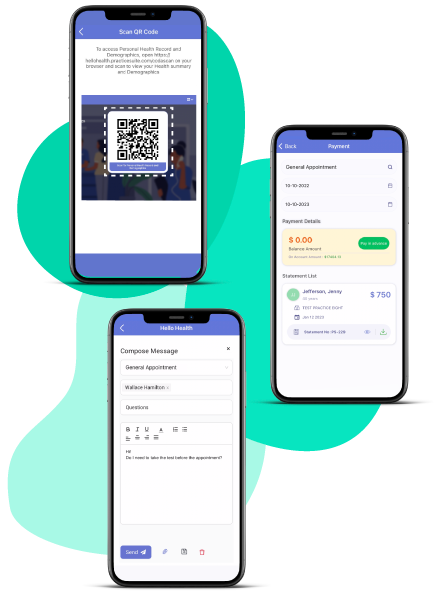Obstacles to Patient Engagement

Obstacles to Patient Engagement
Obstacles to Patient Engagement. Many patients face obstacles that prevent them from engaging in their healthcare experience. Whether it is a lack of digital access, a language barrier or busy schedules, these barriers can reduce patient engagement and medical care quality.
Understanding and addressing these obstacles may help providers promote an inclusive, patient-centered environment.
Lack of Digital Access
Problem:
Healthcare is increasingly delivered digitally through mobile apps or telehealth services. However, not all patients have access to these technologies, and some may lack the skills to use them effectively.
This “digital divide” may prevent patients from receiving medical information, making an appointment or utilizing telehealth.
Solution:
Healthcare providers should offer the most user-friendly technology possible. Apps like HelloHealth focus on the patient experience and can put patients without tech skills at ease.
Create tutorials or printed guides on using your digital resources for patients who want to use technology but lack confidence.
Also, ensure your digital platforms are accessible across devices and partner with community organizations that may offer digital literacy training.
Language Barriers
Problem:
Patients who speak another language may have difficulty understanding medical instructions or complicated treatment options. Language barriers may contribute to misunderstandings, poor adherence to treatments and decreased trust in healthcare providers.
Solution:
Providing language support helps increase engagement. Healthcare providers need interpreters present in person, by telephone or via video to assist with communication.
Offering educational materials, appointment reminders and health information in multiple languages can be helpful.
Training staff in cultural competency may also help them communicate with patients from different backgrounds.
Health Literacy Challenges
Problem:
For some patients, medical terms, instructions, or implications of a diagnosis may be difficult to understand. This can lead to confusion, fear, and disengagement from healthcare.
Solution:
Healthcare providers should use plain language and simplify terms when discussing health information with patients. Avoid medical jargon and explain concepts using analogies or visual aids.
Written instructions in an easy-to-read format or videos or interactive content may also help patients understand their treatment plans and increase engagement.
Inviting patients to ask questions and verifying understanding through teach-back may also promote informed and involved patients.
Busy Schedules
Problem:
Most of us have busy schedules, balancing work, family, and other obligations that make scheduling healthcare appointments and adherence to treatment plans difficult. Long wait times and limited appointment availability add to the problem.
Solution
: Flexible scheduling may make health care more accessible to busy patients. Consider extending office hours to include evenings or weekends and providing telehealth appointments. Create automated reminders for appointments and medications to help your patients stay on track.
Patients can also reduce in-office wait times through online scheduling and virtual check-in systems.
Financial Constraints
Problem:
The price of healthcare is an obstacle for many individuals, particularly those without insurance or high deductibles. Patients may postpone or skip needed treatments due to financial constraints.
Solution:
Healthcare providers may increase engagement by explaining treatment costs openly and discussing financial assistance programs with patients. Offer payment plans or sliding scale fees to those who need them and inform patients about programs that may cover medication or treatment costs.
Information on community health resources, such as nonprofit organizations or free clinics, can also be helpful.
Lack of Social Support
Problem:
Isolated patients or those without support from friends or family members may struggle to remain motivated and interested in their healthcare.
Solution:
Medical providers can introduce clients to local support groups, mental health counselors, or community resources.
For example, group appointments with patients with similar conditions may provide peer support and encouragement.
Physical Barriers to Healthcare Access
Problem:
Physical barriers to accessing healthcare facilities may include mobility issues, lack of transportation, or geographic distance.
Solution:
Telehealth services can help patients who experience physical impediments to accessing care. With virtual consultations available, patients can get care in the comfort of their homes.
For those who need in-person care, partner with a transportation service to offer discounted or free transportation. When feasible, home visits can also help ensure mobility-challenged patients receive the care they need.
A Patient-Centered Practice
Recognizing and addressing patient engagement barriers such as digital access, language differences, and financial constraints may help healthcare providers create an environment encouraging active involvement.
In the long run, a patient-centered model that offers customized support, empathy and flexibility might enhance patient engagement, satisfaction and health outcomes.

